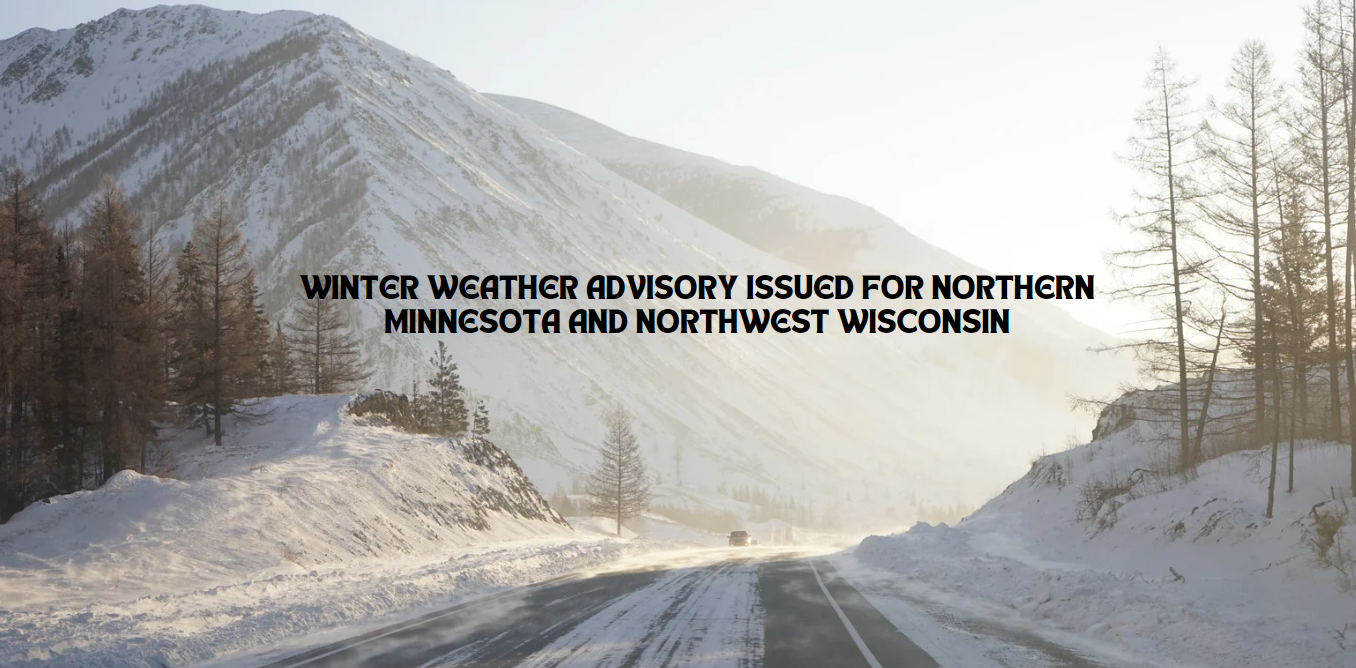The “winter weather advisory issued for northern Minnesota and northwest Wisconsin” has significant implications for residents and travelers in these areas.
This article aims to provide comprehensive insights into the advisory, including weather patterns, potential impacts, safety tips, and more. By diving deep into this topic, we will ensure that you are well-informed and prepared for the winter weather conditions expected in these regions.
Contents
- 1 Understanding Winter Weather Advisories
- 2 Meteorological Overview
- 3 Impact on Daily Life
- 4 Safety Tips for Winter Weather
- 5 Regional Preparations and Responses
- 6 Historical Context and Climate Trends
- 7 Expert Insights and Analysis
- 8 FAQs About Winter Weather Advisory for Northern Minnesota and Northwest Wisconsin
- 8.1 What should I do if I receive a winter weather advisory notification?
- 8.2 How can I stay safe during a winter storm?
- 8.3 What resources are available for assistance during a winter weather advisory?
- 8.4 Can a winter weather advisory escalate to a winter storm warning?
- 8.5 How does a winter weather advisory affect schools and businesses?
- 9 Conclusion
Understanding Winter Weather Advisories
What is a Winter Weather Advisory?
A winter weather advisory is a type of alert issued by the National Weather Service (NWS) to inform the public about upcoming weather conditions that may pose a hazard. While it does not indicate the severity of a winter storm warning, it still means that weather conditions could be dangerous and require caution.
Criteria for Issuing a Winter Weather Advisory
The criteria for issuing a winter weather advisory can vary by region but generally include:
- Snow accumulation of 3-5 inches in 12 hours.
- Freezing rain leading to ice accumulations.
- Sleet accumulations.
- Any combination of snow, sleet, and freezing rain that could impact travel and daily activities.
Meteorological Overview
Current Weather Patterns
The “winter weather advisory issued for northern Minnesota and northwest Wisconsin” is due to a low-pressure system moving across the region. This system is expected to bring a mix of snow, sleet, and freezing rain, creating hazardous travel conditions and potential power outages.
Expected Snowfall and Ice Accumulation
Forecasts predict varying levels of snowfall and ice accumulation across the advisory area. Northern Minnesota might see snow accumulations ranging from 4-6 inches, while northwest Wisconsin could experience slightly lesser amounts but with significant ice accumulation due to freezing rain.
Temperature and Wind Conditions
Temperatures are expected to hover around the freezing mark, which complicates precipitation types. Winds are forecasted to be moderate but could lead to drifting snow and reduced visibility.
Impact on Daily Life
Travel Disruptions
One of the most immediate impacts of the winter weather advisory is on travel. Roads can become slick and dangerous, leading to increased accident risks. Flight cancellations and delays are also possible, affecting regional airports.
School and Work Closures
Schools and businesses may close or operate on delayed schedules due to the hazardous conditions. Parents should monitor local school district announcements for updates.
Power Outages
Ice accumulation on power lines and trees can lead to power outages. Residents should prepare for the possibility of being without power for extended periods by stocking up on essentials and having an emergency kit ready.
Safety Tips for Winter Weather
Preparing Your Home
- Insulate your home to retain heat.
- Keep a supply of food, water, and essential medications.
- Have an emergency kit with flashlights, batteries, a first aid kit, and a manual can opener.
- Use space heaters safely to avoid fire hazards.
Preparing Your Vehicle
- Winterize your vehicle by checking the battery, tires, and antifreeze levels.
- Keep an emergency kit in your car with blankets, food, water, a flashlight, and a shovel.
- Drive cautiously, allowing extra time for travel and maintaining a safe distance from other vehicles.
Personal Safety
- Dress in layers to stay warm.
- Limit outdoor activities to prevent frostbite and hypothermia.
- Check on elderly neighbors and those with health conditions who may need assistance.
Regional Preparations and Responses
Government and Local Authorities
Local authorities are taking steps to prepare for the winter weather advisory by deploying road crews to salt and plow streets, issuing public safety announcements, and coordinating with emergency services.
Community Initiatives
Communities are encouraged to look out for one another. Local shelters may open for those needing warmth, and community centers might offer services to help residents cope with the weather.
Historical Context and Climate Trends
Past Winter Weather Events
Northern Minnesota and northwest Wisconsin have experienced significant winter weather events in the past. Historical data shows that while winter weather advisories are common, the severity can vary greatly.
Climate Change and Winter Weather
Climate change impacts winter weather patterns, potentially leading to more frequent and severe winter storms. Warmer temperatures can result in more ice events as opposed to snow, which can be more hazardous.
Expert Insights and Analysis
Meteorologists’ Perspectives
Meteorologists emphasize the importance of taking winter weather advisories seriously. Even if the forecasted amounts of snow and ice do not seem extreme, the combination of elements can create dangerous conditions.
Environmental Scientists’ Views
Environmental scientists note that understanding and preparing for winter weather advisories is crucial, especially as climate change continues to influence weather patterns. They advocate for increased public awareness and preparedness measures.
FAQs About Winter Weather Advisory for Northern Minnesota and Northwest Wisconsin
What should I do if I receive a winter weather advisory notification?
When a winter weather advisory is issued, it is important to stay informed by monitoring weather reports and following guidance from local authorities. Prepare your home and vehicle for the expected conditions and limit travel if possible.
How can I stay safe during a winter storm?
To stay safe during a winter storm, dress warmly, avoid unnecessary travel, and keep an emergency kit on hand. Stay indoors as much as possible and check on vulnerable neighbors.
What resources are available for assistance during a winter weather advisory?
Local government websites and community centers often provide resources and information during winter weather advisories. Additionally, the American Red Cross and local shelters may offer support for those in need.
Can a winter weather advisory escalate to a winter storm warning?
Yes, a winter weather advisory can escalate to a winter storm warning if conditions worsen. It is important to stay updated with the latest weather information and be prepared for changes.
How does a winter weather advisory affect schools and businesses?
Schools and businesses may close or operate on delayed schedules during a winter weather advisory to ensure the safety of students and employees. Check with local authorities and institutions for specific updates.
Conclusion
The “winter weather advisory issued for northern Minnesota and northwest Wisconsin” is a significant alert that residents should not take lightly.
By understanding the advisory, preparing appropriately, and staying informed, individuals can navigate these challenging weather conditions safely. This article has provided an in-depth look at the advisory, its impacts, safety tips, and expert insights to ensure that you are well-prepared for the winter weather ahead.







